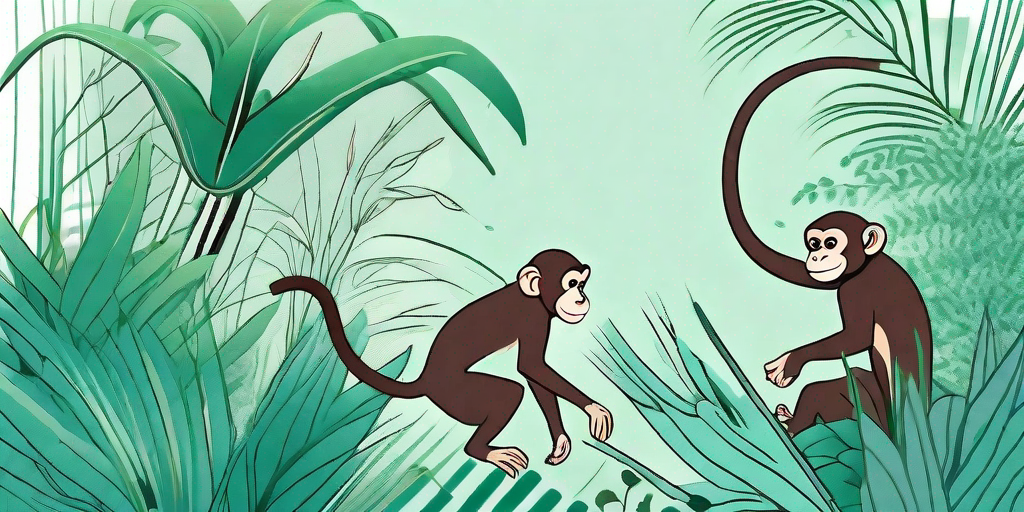
Welcome to the wild side of gardening, where we take a walk on the untamed path and explore the beauty of monkey grass borders. If you're looking to bring a touch of the jungle to your backyard, you're in the right place. Let's dive into the green abyss and discover how to create a stunning monkey grass border for your garden.
Understanding Monkey Grass
Before we get our hands dirty, let's take a moment to understand what monkey grass is. No, it's not a type of grass that monkeys prefer, although that would be amusing. Monkey grass, also known as liriope, is a hardy evergreen plant that thrives in various conditions. It's a popular choice for borders due to its lush, dense foliage and low maintenance requirements.
Monkey grass is a versatile plant that can handle full sun, partial shade, and even full shade. It's also drought-tolerant, making it a great option for those forgetful waterers out there. Plus, it's resistant to most pests and diseases, so you won't have to worry about your border being decimated by pesky invaders.
Now that we've got the basics down, let's get to the fun part: creating a monkey grass border that would make Tarzan jealous.
Creating Your Monkey Grass Border
Choosing the Right Location
First things first, you need to choose the right location for your monkey grass border. As we mentioned earlier, monkey grass is pretty flexible when it comes to light conditions. However, for the lushest growth, a location with partial shade is ideal. So, if your garden has a spot that gets a mix of sun and shade throughout the day, that's your winner.
Also, consider the soil conditions. Monkey grass prefers well-draining soil, so avoid areas where water tends to pool. If your garden has heavy clay soil, you might want to amend it with some organic matter to improve drainage.
Preparing the Soil
Once you've chosen the perfect location, it's time to prepare the soil. Start by removing any existing grass or weeds from the area. You don't want any competition for your monkey grass. Then, loosen the soil with a garden fork or tiller. This will make it easier for the monkey grass roots to establish themselves.
Next, enrich the soil with some organic matter. This could be compost, well-rotted manure, or a slow-release fertilizer. Mix it into the top layer of the soil. This will provide your monkey grass with the nutrients it needs to thrive.
Planting the Monkey Grass
Now we're getting to the exciting part: planting the monkey grass. Dig a hole that's about twice as wide and just as deep as the root ball of your monkey grass plant. Place the plant in the hole, making sure that the top of the root ball is level with the soil surface. Then, backfill the hole with soil, firming it gently around the base of the plant.
Repeat this process along the length of your border, spacing the plants about a foot apart. This will give them room to spread and create a dense, lush border. Once all the plants are in the ground, give them a good watering to help them settle in.
Maintaining Your Monkey Grass Border
One of the great things about monkey grass is that it's low maintenance. But that doesn't mean you can completely ignore it. Here are a few tips to keep your monkey grass border looking its best.
Water your monkey grass regularly, especially during dry periods. While it's drought-tolerant, it will appreciate a drink now and then. However, be careful not to overwater, as this can lead to root rot.
Every spring, give your monkey grass a trim. This will remove any dead or damaged foliage and encourage new growth. It's also a good idea to feed your monkey grass with a slow-release fertilizer at this time to give it a boost for the growing season.
FAQs
- Is monkey grass invasive?
While monkey grass can spread, it's not typically considered invasive. However, it can become a bit enthusiastic in its growth, so you may need to keep it in check with regular trimming.
- Can I grow monkey grass from seed?
Yes, you can grow monkey grass from seed, but it's much easier and quicker to propagate it by division. Simply dig up a clump, divide it into smaller sections, and replant them.
- Does monkey grass attract wildlife?
Monkey grass can attract a variety of wildlife, including birds and butterflies. Its purple flowers are particularly appealing to pollinators.
Conclusion
Creating a monkey grass border for your garden is a fun and rewarding project. Not only will it add a touch of the jungle to your backyard, but it will also provide a low-maintenance, attractive border that will last for years. So why not give it a try? Your garden (and the local wildlife) will thank you.
Remember, gardening is not about perfection. It's about enjoying the process, learning from your mistakes, and celebrating your successes. So go ahead, unleash your inner Tarzan, and create a monkey grass border that's uniquely yours. Happy gardening!















